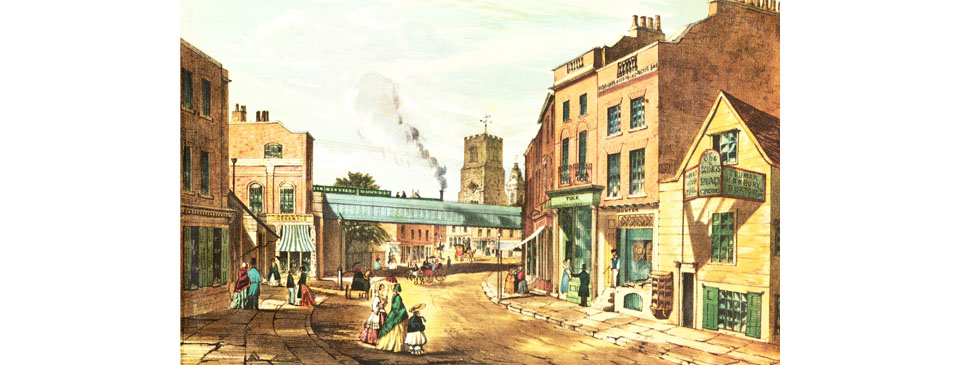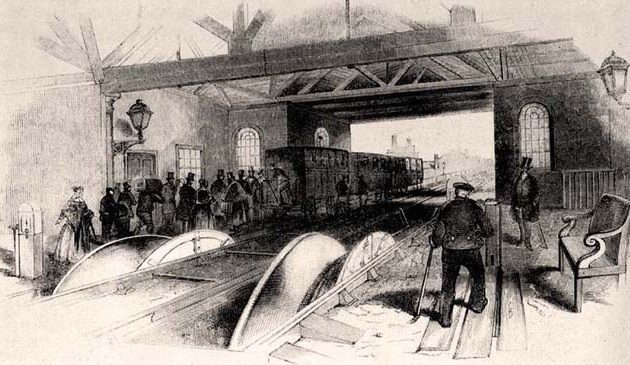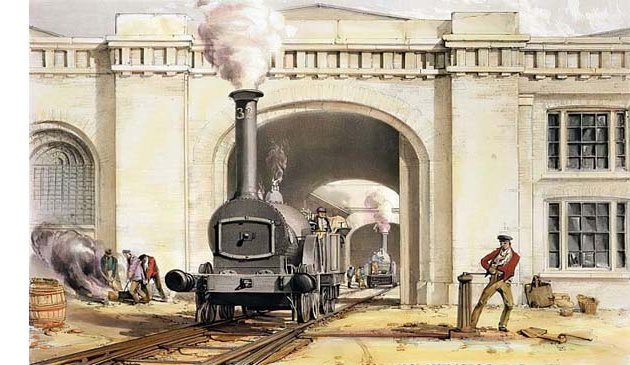In brief – London during the mid-19th century

A train from Camden passes over Mare Street, Hackney on the new North London Railway in this engraving from the early 1850s. The railway was built to provide a link between the London & Birmingham Railway at Chalk Farm and the East and West India Docks. The section through Hackney was completed in 1850 and the entire line opened in January 1852.
With their new commuter inhabitants, the surrounding villages such as Richmond, Barnes, Walthamstow and Tottenham expanded, growing into small self-sufficient towns with their own trades and services. A greater number of people were then able to work locally and no longer had a need to commute into London each day. In this way numerous villages became towns.
The wealthier people who lived on the west side of London had long been able to enjoy a visit to the royal parks, to which Regent’s Park had more recently been added on the north side of town. The Metropolitan Board of Works, City of London Corporation, local authorities and philanthropic landowners began providing the same benefit for the working classes and new suburbanites. Public parks began to be created, the first major one of which was Victoria Park in Hackney.
Passenger steamboats were introduced onto the river from 1818 and Londoners increasingly took day trips to attractions outside of the capital such as Gravesend and Margate or upriver to Richmond, Henley, Hampton Court and Windsor. Due to aggressive competition between steamboat companies they worked to tight schedules, without any standards of safety or regulation, and accidents were common.
From the Restoration period of the 17th century only two London theatres were licensed to perform spoken drama. During the 18th and early 19th centuries a number of new venues opened, circumventing the law by staging musicals. The Theatres Act of 1843 finally discontinued the ancient regulation, the result of which was a rapid growth in the number of theatres in central London and the new suburbs.
With a growing complex of docks on each side of the Thames east of London there was a need for a dry crossing downriver of London Bridge. A tunnel had been unsuccessfully tried several times. In 1825 work began on yet another attempt, led by engineer Marc Isambard Brunel, between Rotherhithe and Wapping. After much difficulty it was finally completed by his son Isambard Kingdom Brunel in 1843, the world’s first underwater river tunnel.
London was the capital of the world’s greatest empire on which the British boasted “the sun never set” and the Victorian era was a time of rapid progress in engineering and inventions. Against this background it was decided to hold a ‘Great Exhibition of the Works of Industry of All Nations’ in Hyde Park in 1851, with the support of Prince Albert. The new rail network was able to bring large numbers of people to London and the exhibition was a huge success, with six million visitors in its six months duration.


